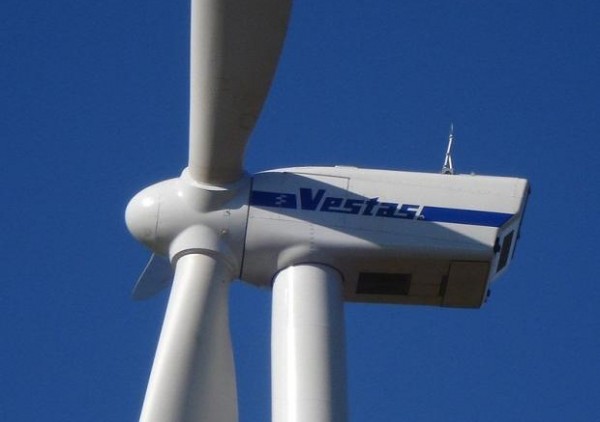The state of Massachusetts, which earlier this year released an independent study that largely dismissed claims that living near wind farms can cause a range of devastating health effects, is now cracking down on noisy turbines.
In March, the state’s Department of Environmental Protection (MassDEP) conducted tests of a couple of turbines at the Falmouth, Mass., waste treatment plant, where neighbors had complained of excessive noise. In a new report [PDF], that state said the tests revealed that sound levels from one of two Vestas V82 1.65-megawatt (MW) turbines “exceed the 10 dBA threshold that MassDEP defines as unacceptable sound at one of the sampling sites under both high and low wind conditions.”

So the department recommended to Falmouth that the turbine be shut down while it conducts further studies – and that the second turbine be switched off at night, as well.
According to the state, neighbors have complained about noise problems since the town installed the first turbine more than two years ago as part of a MassDEP energy management pilot program to reduce the energy use and greenhouse gas emissions of drinking water and wastewater treatment facilities.
In the summer of 2010 the town commission a study [PDF] that found that sound levels around Wind #1 approached but did not violate state standards and predicted that a second turbine, then under construction, would lead to “no violations at any measurement positions.” But measuring sound is a complex matter, and the city took issue with the study done by the consultants. Meanwhile, residents were telling stories of devastating health consequences from the noise.
Eventually, the state moved to conduct further testing. The result of that testing — a decision to curtail wind power production to look further into the noise issue — was a bit surprising, since Massachusetts Gov. Deval Patrick and his administration are big backers of wind power. In fact, just a few weeks ago, the governor attended the opening of a 10-turbine, 15-MW wind power plant in the Berkshires.
The state’s environmental protection commissioner, Kenneth Kimmell, told the Boston Globe the new Falmouth noise report “demonstrates that Massachusetts DEP calls balls and strikes in an impartial way and holds wind turbines to the same standards as we apply to other industries.” That said, Kimmell said other turbines operate in the state in residential areas with little complaint.

One difference between the Falmouth case and others could be the type of turbine used, according to the Cape Cod Times. The paper said opponents of a new set of turbines in Fairhaven, Mass., were cheered by the state’s action on Falmouth, but the Fairhaven wind developer said its “pitch-regulated” turbines are quieter than the “stall-regulated” Falmouth Wind #1.
According to information on the website of the Texas wind developer Horizon Wind Energy, pitch-control and stall-control are the two basic approaches used to control a wind turbine in high speed winds. “In pitch-controlled turbines, an anemometer mounted atop the nacelle constantly checks the wind speed and sends signals to a pitch actuator, adjusting the angle of the blades to capture the energy from the wind most efficiently,” according to Horizon. “On a stall-regulated wind turbine, the blades are locked in place and do not adjust during operation. Instead the blades are designed and shaped to increasingly “stall” the blade’s angle of attack with the wind to both maximize power output and protect the turbine from excessive wind speeds.”
Whatever the case, the turbines in Fairhaven, although new, are drawing plenty of complaints — 27 in one month, according to the Cape Cod Times.
Meanwhile, in Falmouth, some residents claim to be victims of “wind turbine syndrome.” But the state-convened panel of medical and environmental health experts that reported in January found little or no evidence to back up claims that low-frequency sounds from turbines harm the vestibular system, or that turbine noise brings psychological distress or mental health problems, or that there is an association between turbine exposure and pain and stiffness, diabetes, high blood pressure, tinnitus, hearing impairment, cardiovascular disease and headache or migraine.